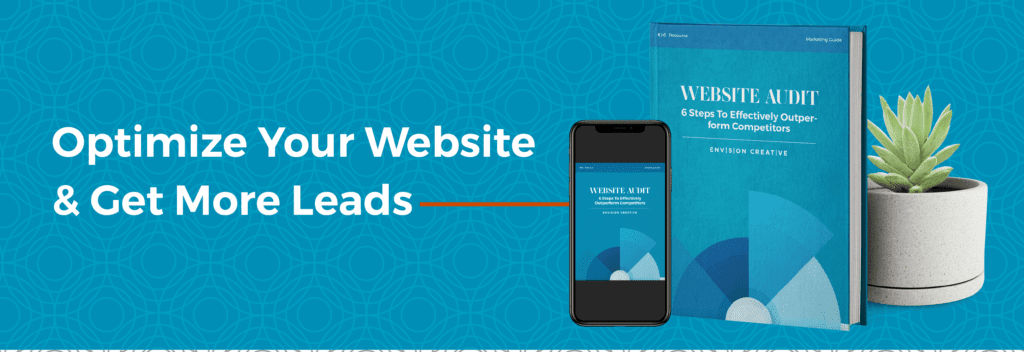Advertising. You either love it or hate it. There doesn’t seem to be a middle ground. Or is there?
Strangely enough, native advertising has emerged as advertising’s middle ground. People don’t react as negatively to native ads as they do with other forms of advertising. Just look at these impressive statistics:
- Consumers view native ads 53% more than display ads
- 32% of people said they would share a native ad with friends and family, versus 19% for display ads
- Native ads can increase purchase intent by 18%
Native advertising is clearly a worthwhile investment.
The Groundwork for Native Advertising
Native advertising isn’t a hard concept to grasp. Unfortunately, there’s a lot of misinformation about what it is and does. To start things off, let’s cover the basics and move on from there.
What is native advertising?
Paid media that looks natural and blends in with other native content wherever it is published.
Native advertising—also known as branded or sponsored content—often appears in the form of featured articles, news, product reviews, testimonials, or even events. It offers a great way to reach targeted audiences with customized content.
As native advertising has become more popular—especially the use of social influencers—the FTC has created guidelines that ensure transparency remains a priority.
FTC Native Advertising Guidelines
The FTC’s guidelines are long and detailed (almost 6,000 words, to be exact), so we’ll provide the shortened version that can help ensure your ads fall within accepted parameters.
Here are the 3 most important FTC guidelines you’ll need to know:
- Do not try to deceive your audience or misrepresent promoted materials
- Clearly tell people that your content is sponsored or branded
- Prominently disclose any clarifying information
If you follow those three simple rules and regularly check on the the FTC’s guidelines, you shouldn’t have anything to worry about.
5 Great Native Advertising Examples
The best native ads are the ones that engage your interest so strongly you don’t realize it’s sponsored until you’re halfway through the experience.
Here are some great native advertising examples that follow FTC guidelines and deliver powerful content.
OppenheimerFunds
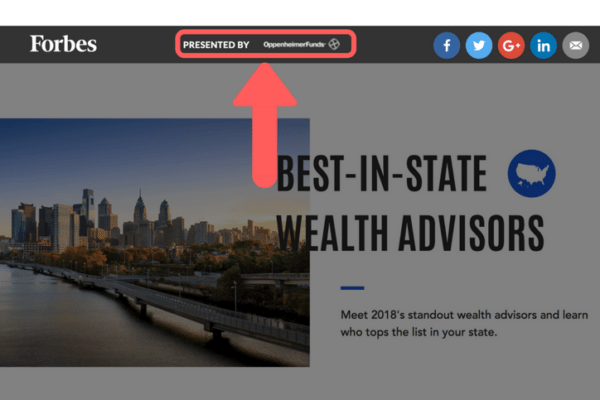
This ad is a perfect example of content that fits seamlessly into its surroundings. Unless you’re specifically looking at that top bar, you might not even notice this is a native ad.
OppenheimerFunds paid Forbes to have this article featured on the main homepage in the “Recommended” section. It’s interesting to note that there is no way of knowing this is a sponsored article until you actually navigate to the page:
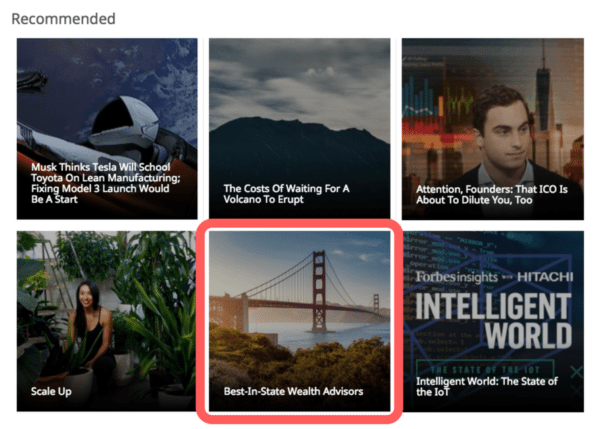
Microsoft
As part of their larger “Browser You Love to Hate” campaign that promoted the new and improved version of Internet Explorer, Microsoft created this 2013 native ad that instantly went viral on YouTube.
The ad was specifically created to NOT look like a commercial, but rather like an entertaining 90s throwback video. It’s not until the 1:30 mark you even realize this is an ad.
Because it was promoted on YouTube and looked like non-advertorial content, this qualifies as a stellar native ad.
IKEA and The Telegraph
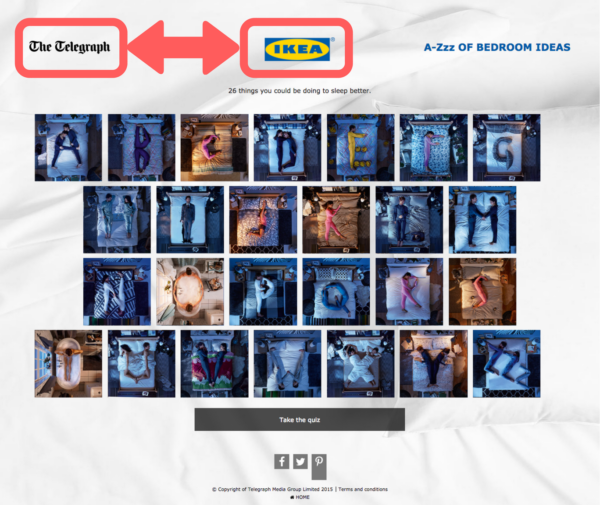
IKEA and The Telegraph teamed up for this clever native ad campaign in 2015. Visitors to The Telegraph’s website were invited to complete a quiz and explore unique bedroom ideas from A to Z—quite literally.
The concept was not only fun and helpful, it also promoted IKEA’s new line of bedroom products:
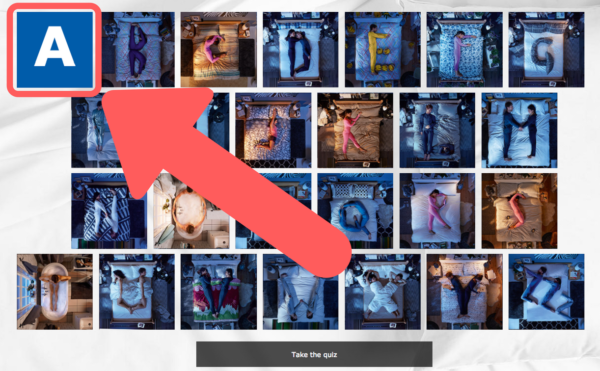
Check out the full campaign here.
McCann New York
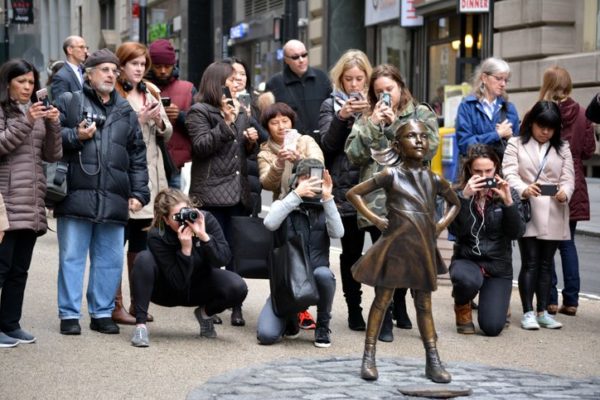
In early March 2017, McCann New York made a huge splash with The Fearless Girl statue. Situated on Wall Street directly in front of the famous Charging Bull statue, the bronze figure brought attention to the “SHE” fund while promoting women in leadership.
The campaign performed above and beyond expectations, racking up more than 1 billion Twitter impressions in the first 12 hours. It became so popular that McCann took out a permit so the statue could remain in place for 11 months.
Lyft: Stranger Things
On October 27-28, 2017, Lyft created a Stranger Things adventure that took unsuspecting fans on the ride of their lives. Masquerading as an everyday Lyft ride, this elaborate native advertisement created an unforgettable experience for riders by making them feel like they were in the Stranger Things world, one creepy cue at a time.
Check out the video below:
Not only was this a brilliant stroke of native advertising, it made a big impression on fans and showcased a flawless example of co-brandable advertising.
Native Advertising’s Bright Future
Native advertising has changed drastically to meet the demands of social media and digital marketing. From the days of editorial-themed advertorials and branded radio programs to infomercials and sponsored content, native ads have stood the test of time.
Here are two trends that will present fascinating opportunities for native advertising in the next few years:
- VR advertising has huge potential for native advertising. Imagine being able to become part of the consumer’s 360-degree experience. Everything from product placement to branded storylines could be used as native ads.
- Mobile messaging was one of the buzziest marketing terms of 2017. Messaging provides ways to engage and interact with consumers through branded content and other forms of native advertising.
If you ask Joe Pulizzi of Content Marketing Institute, he’ll tell you that native advertising is a form of “pay for play.” In order to be successful in native advertising, you have to be willing to pay for great results.
Exceptional native ads should create a seamless, valuable experience that doesn’t feel like advertising. The next time you see an article, video, or social media post that grabs your attention, check to see if it’s a piece of native advertising.
-FINAL(01-00)-White&Blue-01.svg)

